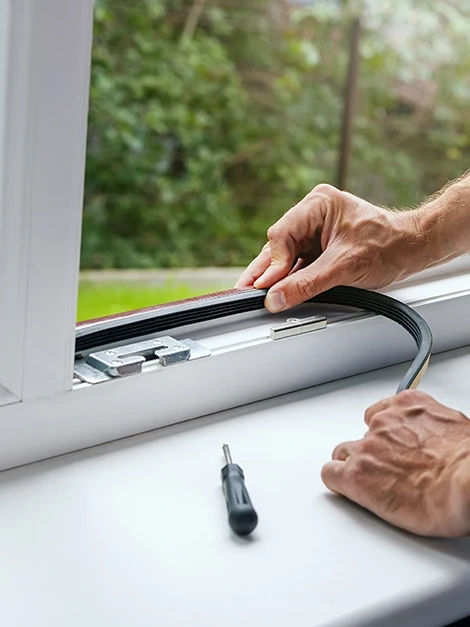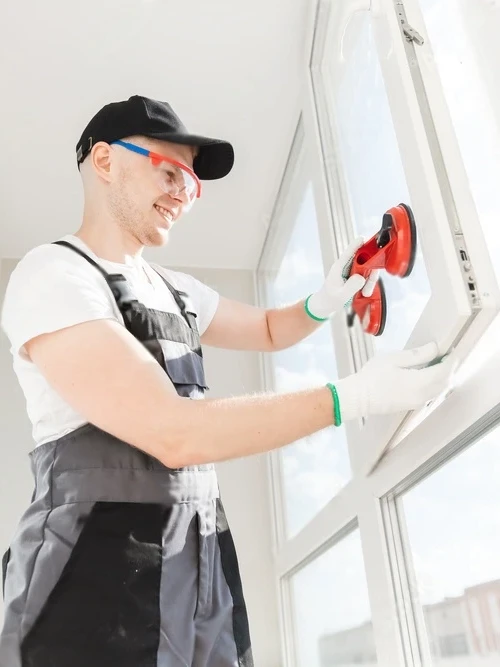Windows are more than just openings in a wall; they are vital components of a building’s character and functionality. In the United Kingdom, where architectural styles range from historic to contemporary, the choice of windows can significantly impact both aesthetics and energy efficiency.
Considering replacement windows?
Key Takeaways:
- Understanding Windows: Their role in architecture and their evolution over time.
- Components: Key parts of a window and their functions.
- Single and Double-Hung Windows: Popular in the UK for their traditional look and ease of use.
- Casement Windows: Known for their energy efficiency and ventilation capabilities.
- Sliding Windows: Ideal for modern homes with limited space.
Understanding Windows in Architecture
Windows have played a crucial role in architectural design for centuries. In the UK, from the ornate windows of Gothic cathedrals to the sleek, minimalist designs in modern buildings, windows have evolved to meet both aesthetic and practical needs. They not only allow natural light and air to enter but also contribute to the building’s overall energy efficiency.

History and Evolution of Window Designs
The history of windows in the UK is a journey through time. Initially, windows were mere openings, covered with animal hide or cloth. The introduction of glass panes, a luxury in medieval times, marked a significant turning point. The Victorian era saw the rise of sash windows, which are still popular in many British homes. Today, advancements in technology have led to windows that offer better insulation, security, and durability.
Basic Components of Windows
Understanding the basic components of windows is essential. The frame holds the window in place, the sill supports the frame, and the pane is the glass part of the window. Other components like the mullions (vertical bars between panes) and lintels (horizontal supports) also play crucial roles in the structure and functionality of windows.
Single and Double-Hung Windows
Single and double-hung windows are a staple in British homes. Their classic design, characterized by one or two sashes that slide vertically, offers both beauty and practicality.
Advantages of Single and Double-Hung Windows
- Versatility: Fits well with both traditional and modern homes.
- Ease of Use: Simple to open and close, making them practical for all ages.
- Ventilation: Allows control over air flow, essential in the UK’s variable climate.
Casement Windows
Casement windows, hinged at the sides and opening outward, are a popular choice in the UK for their energy efficiency and ease of operation.
Benefits of Casement Windows
- Energy Efficiency: Excellent sealing capabilities reduce heat loss.
- Ventilation: Can be opened fully, allowing maximum air flow.
- Security: Often equipped with robust locking mechanisms.
Sliding Windows
Sliding windows, where one or more panels move horizontally, are a modern solution for space-saving and simplicity.

Features of Sliding Windows
- Space-Saving Design: Ideal for homes with limited exterior space.
- Contemporary Look: Offers a sleek, minimalist aesthetic.
- Ease of Maintenance: Fewer moving parts mean less wear and tear.
Table 1: Comparison of Window Types in the UK
| Window Type | Popularity | Energy Efficiency | Maintenance | Aesthetic Appeal |
| Single-Hung | High | Moderate | Low | Traditional |
| Double-Hung | Very High | Moderate-High | Moderate | Versatile |
| Casement | High | High | Moderate | Modern |
| Sliding | Moderate | Moderate | Low | Contemporary |
Awning and Hopper Windows
Awning and hopper windows are unique in their operation and offer specific advantages in certain settings.
Awning Windows
- Design: Hinged at the top and open outward.
- Benefits: Provide ventilation even during light rain, ideal for UK weather.
- Placement: Often used in combination with larger stationary windows.
Hopper Windows
- Design: Hinged at the bottom and open inward.
- Advantages: Excellent for basements or small spaces due to their compact design.
Bay and Bow Windows
Bay and bow windows extend beyond the exterior wall, creating a sense of spaciousness and offering panoramic views.
Bay Windows
- Structure: Typically feature a central fixed window flanked by angled casement or double-hung windows.
- Benefits: Create additional space, often used for a window seat or storage.
Bow Windows
- Design: Comprise multiple windows of the same size, creating a gentle outward curve.
- Aesthetic: Add a touch of elegance and are often used in Victorian-style homes.
Specialty and Custom Windows
For homeowners seeking a unique touch, specialty and custom windows offer limitless possibilities.
Custom Designs
- Flexibility: Tailored to specific architectural needs or aesthetic desires.
- Creativity: Allows for unique shapes, sizes, and styles.

Energy Efficiency and Modern Windows
In the UK, where energy conservation is a priority, modern windows play a significant role.
Technological Advancements
- Double Glazing: Two panes of glass with an insulating gap reduce heat loss.
- Low-E Coatings: Reflect infrared light, keeping homes warmer in winter and cooler in summer.
- Gas Fills: Argon or krypton gas between panes for better insulation.
Table 2: Energy Efficiency Features of Different Window Types
| Window Type | Double Glazing | Low-E Coating | Gas Fill |
| Awning | Common | Available | Optional |
| Hopper | Common | Available | Optional |
| Bay | Standard | Standard | Standard |
| Bow | Standard | Standard | Standard |
FAQs on Different Types of Windows
Casement, bay, and bow windows with double glazing and low-E coatings are highly efficient.
Yes, many manufacturers offer custom window designs to fit unique architectural styles.
While more common in modern homes, sliding windows can be designed to suit traditional aesthetics.







